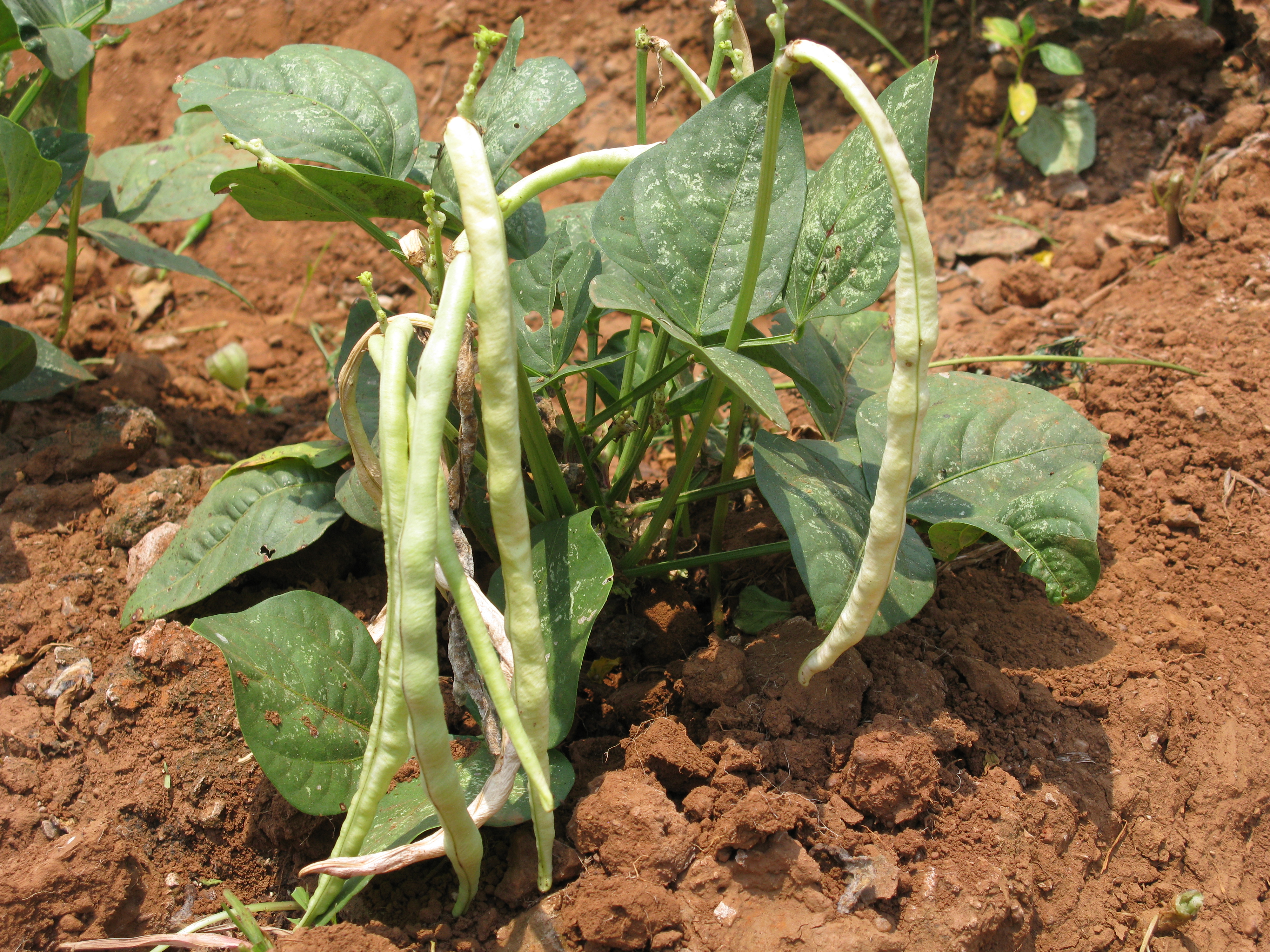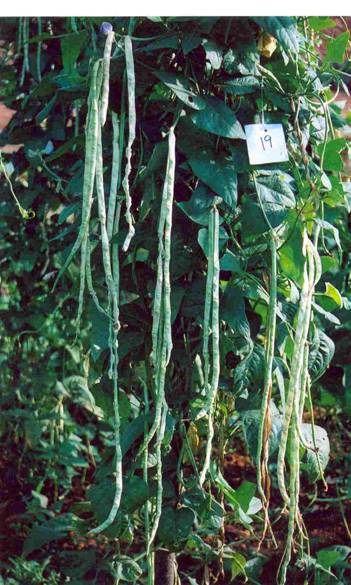
Crop: Vegetable cowpea
Scientific name : (Syn: Southern pea, Black eyed pea, Yard long bean) (Vigna uniguiculata) (2n=22, 24)
Common / Local Name : Hindi: Lobia, Chowli
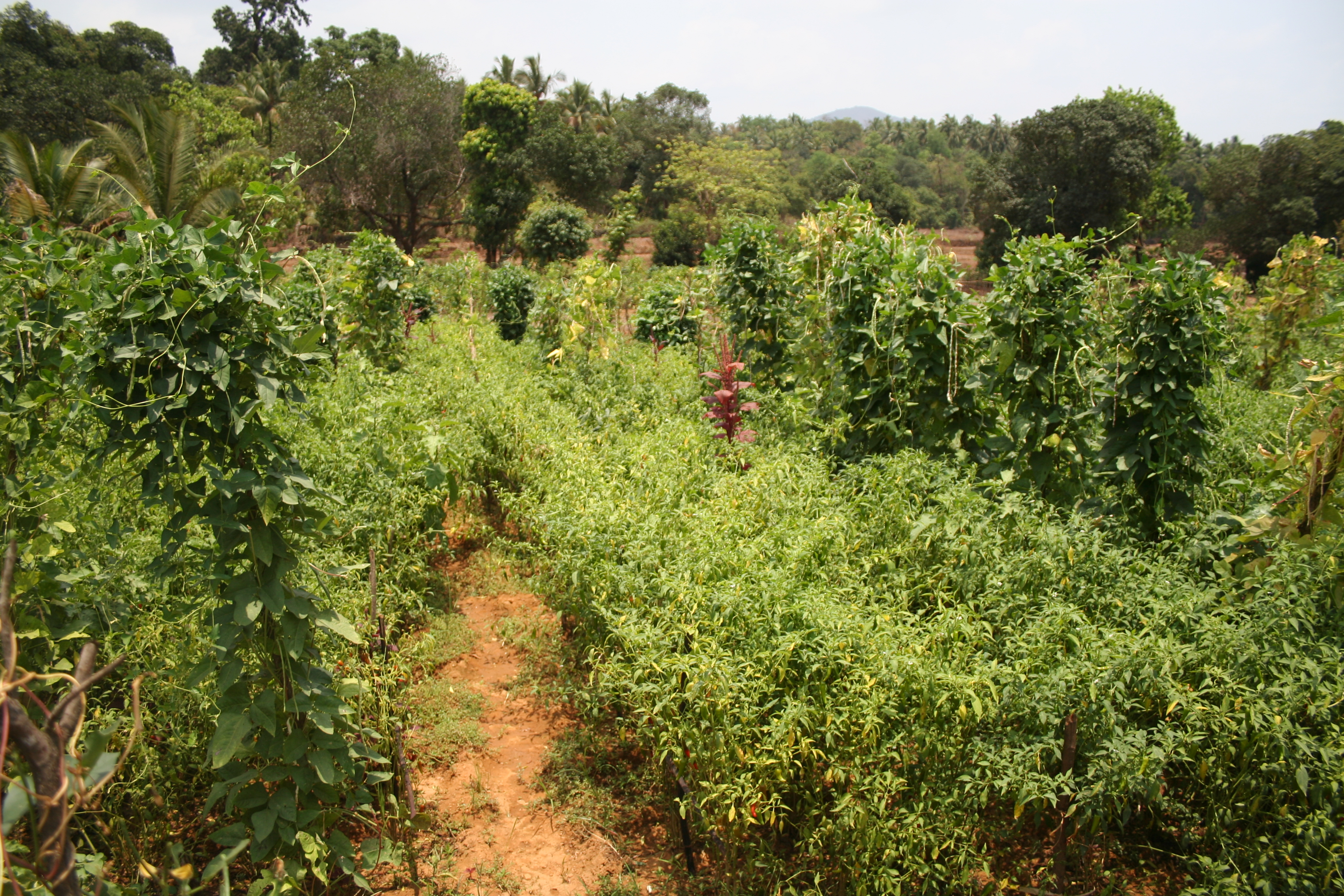
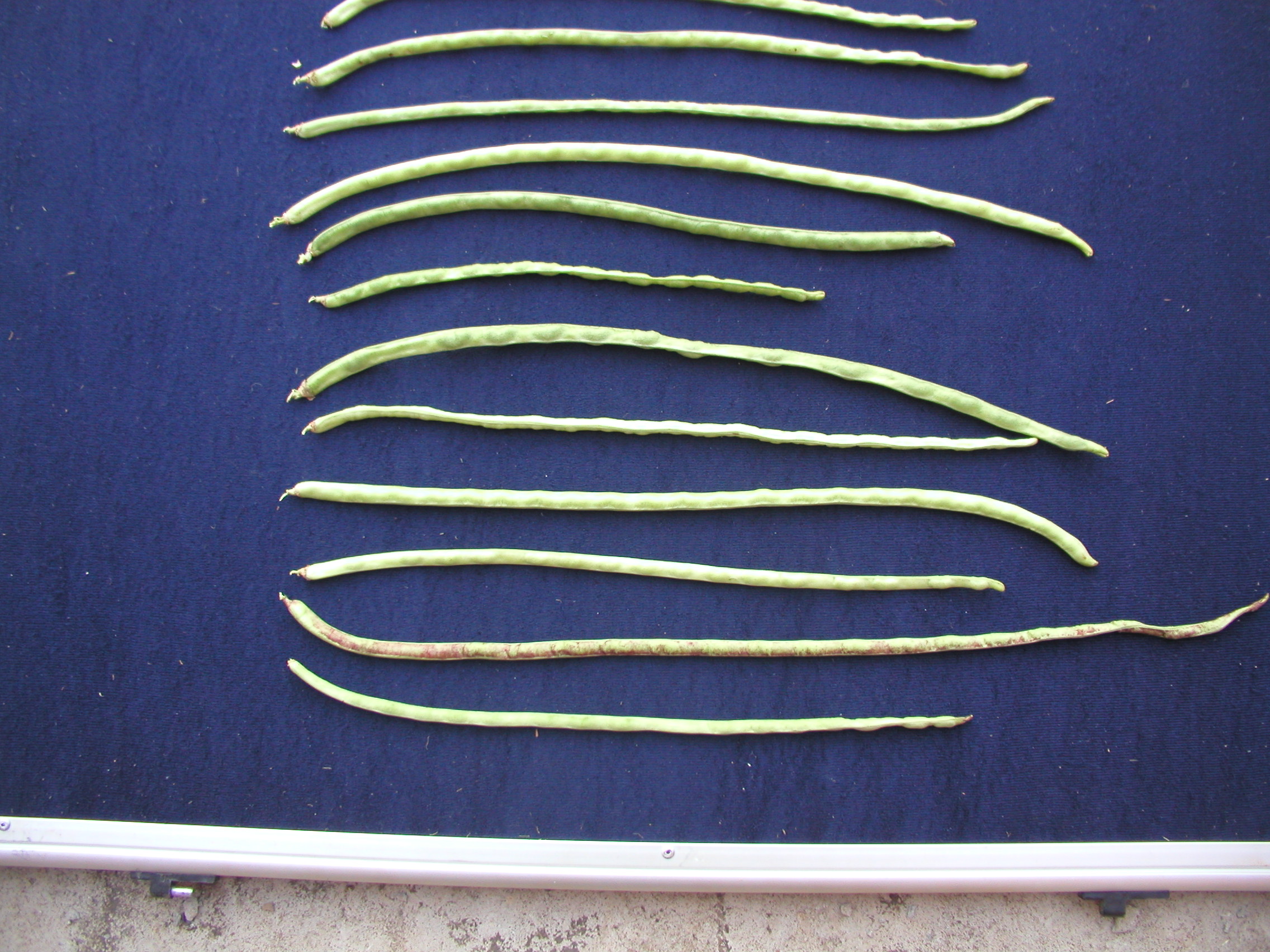
Cowpea is a typical warm season crop adapted to tropics. The crop is used in a variety of ways. Tender pods are used as vegetable and dry beans as pulse. Due to its nutritive value and soil improving properties, it is also used as a fodder, green manure and cover crop. Being a legume crop, cow pea fits well in inter-cropping system. In Kerala, it is grown as a floor crop in coconut gardens, as an inter-crop in tapioca, fringe crop in rice fields and in garden lands. The crop is an integral part of sustainable agriculture. 100 g of green tender pods contain 4.3 g protein, 2.0 fibre, 8.0 g carbodydrates, 74 mg phosphorus, 2.5 mg iron, 13.0 mg vitamin-C,0.9 mg minerals, etc. (Africa is considered as primary centre of origin of cowpea).
Land is prepared to a fine tilth by 2-3 ploughing and harrowing. Field is divided into plots of convenient size and seeds of bushy varieties are dibbled at a spacing of 30 x 15 cm with 1-2 seeds per hole. For semi-trailing varieties provide a spacing of 45 x 30 cm. During rainy season, seeds are sown at the above spacing in raised beds of 90 cm width. Trailing varieties are sown in pits of 45-60 cm diameter and 30-45 cm depth at a spacing of 2 m x 2 m with 3 plants/pit for trailing on bower. Trailing varieties are also grown on trellis by sowing seeds in channels at 1.50 x 0.45 spacing.

Seed rate required for various types are
|
Seed rate |
Spacing |
Bushy vegetable types |
20-25 kg/ha |
30 x 15 cm |
Semi-trailing vegetable types |
20-25 kg/ha |
45 x 30 cm |
Trailing vegetable types |
4-5 kg/ha |
2.0 x 2.0 m |
Dual purpose (broadcasting) |
60-65 kg/ha |
- |
Dual purpose (dibbling) |
40-60 kg/ha |
45 x 30 cm |
In land, where cowpea is cultivated for the first time, inoculate seeds with Rhizobium for quick nodulation on roots and for fixing atmospheric nitrogen.
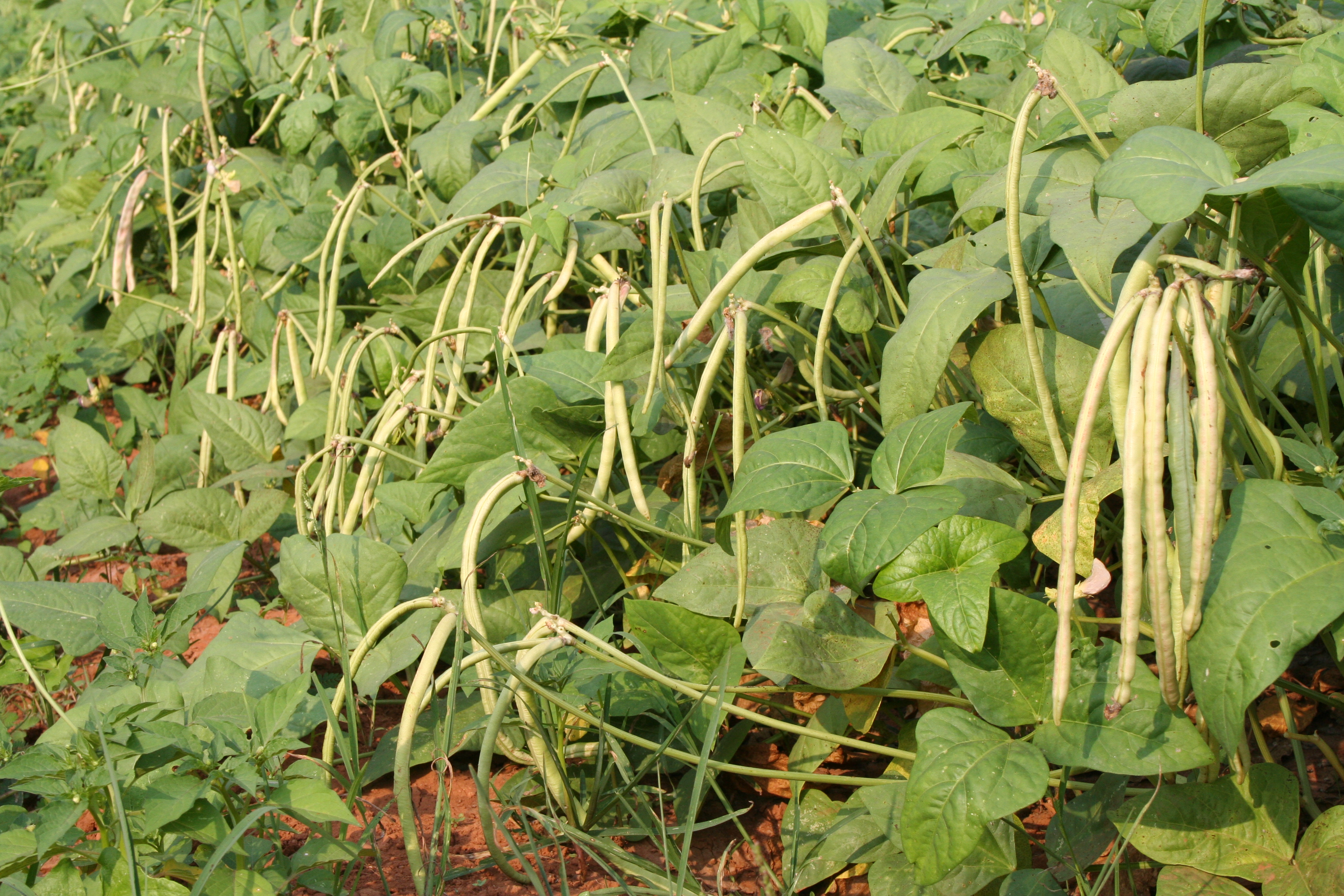
Arka Garima:
Derived through back cross and pure line selection from TUV 762 x V.unguiculata var. sesquipedalis. Plants vigorous, bushy, with purple flowers. Pods round and thick, fleshy and stringless. Tolerant to heat and drought. Yield 18 t/ha in 90 days.
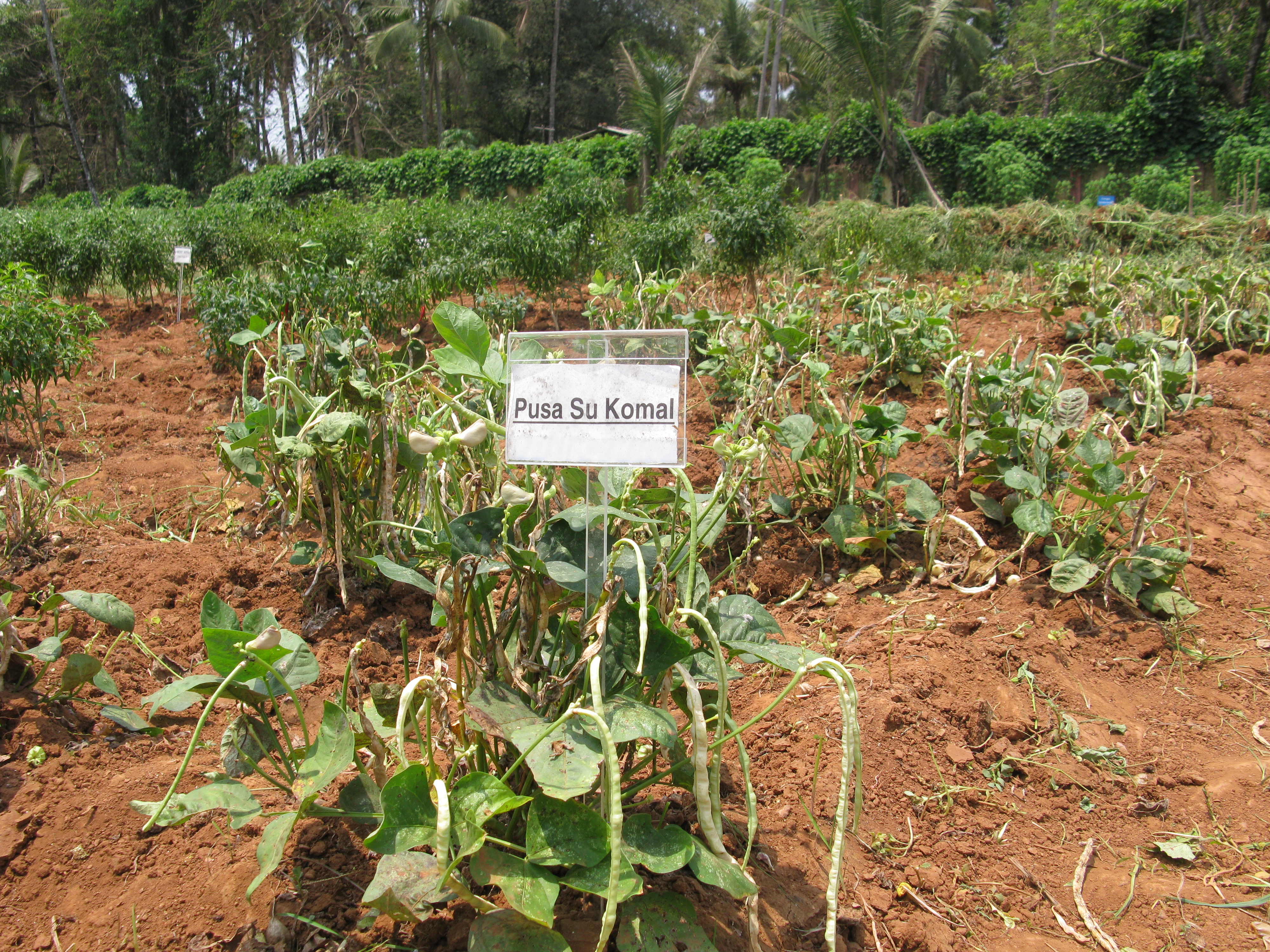
Pusa Su komal:
Plants bushy, flowers in 45 days. Pods light green, 25-30 cm long. Resistant to bacterial blight. Yield 10 t/ha)
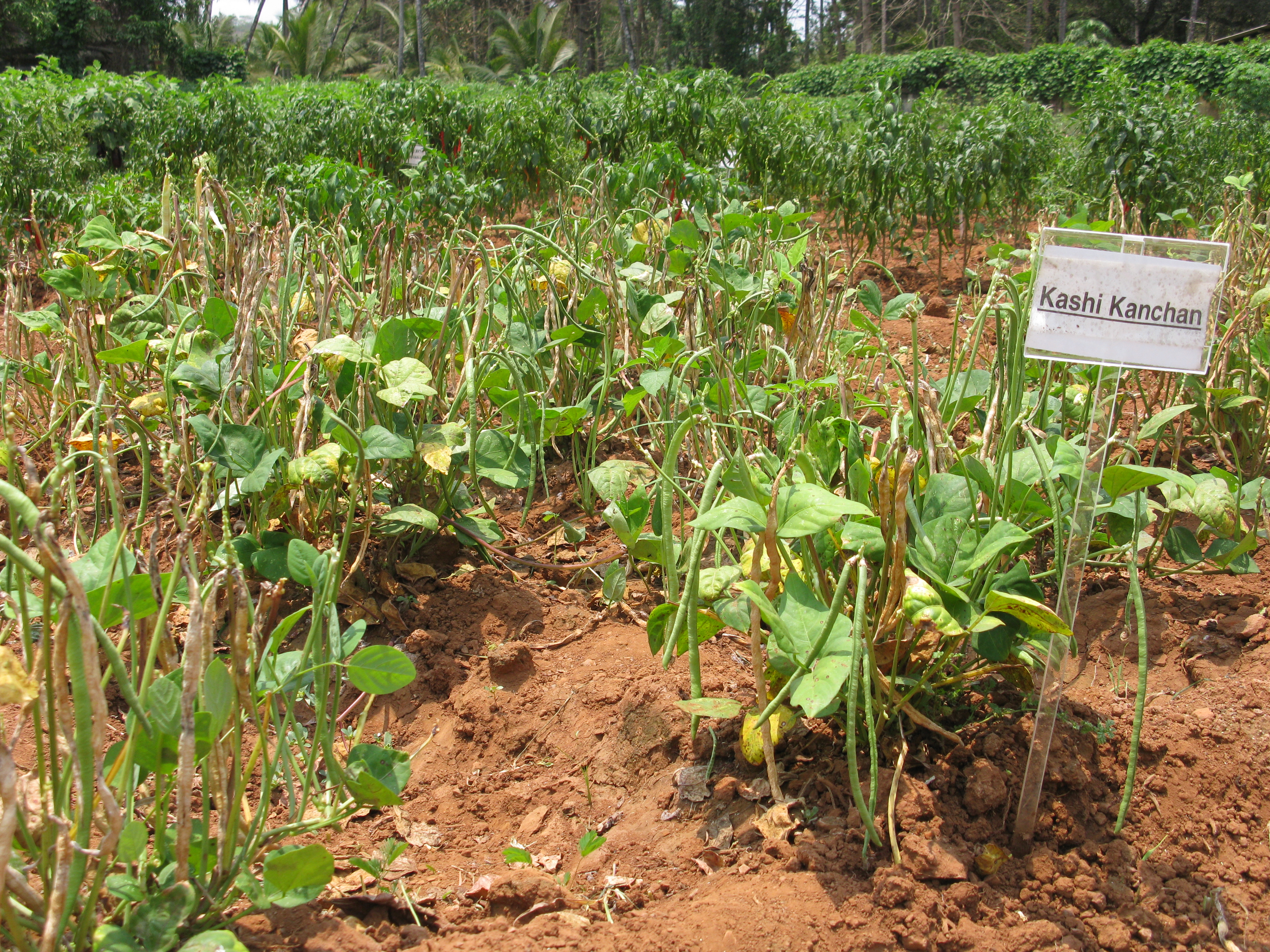
Kashi Kanchan:
This is dwarf and bush type (height 50-60 cm), photo-insensitive, early flowering (40-45 days after sowing) and early picking (50-55 days after sowing) variety suitable for growing in both spring-summer and rainy seasons. Pods are about 30-35 cm long, dark green, soft, fleshy and free from parchment. The cultivar gives green pod yield of about 150-175 q/ ha and is resistant to golden mosaic virus and Pseudocercospora cruenta. This has been released and notified during the XIII meeting of Central Sub-Committee on Crop Standard Notification and Release of Varieties for Horticultural Crops for cultivation in U.P., Punjab, Bihar, Chhattisagarh, Orissa, A.P., M.P. and states.
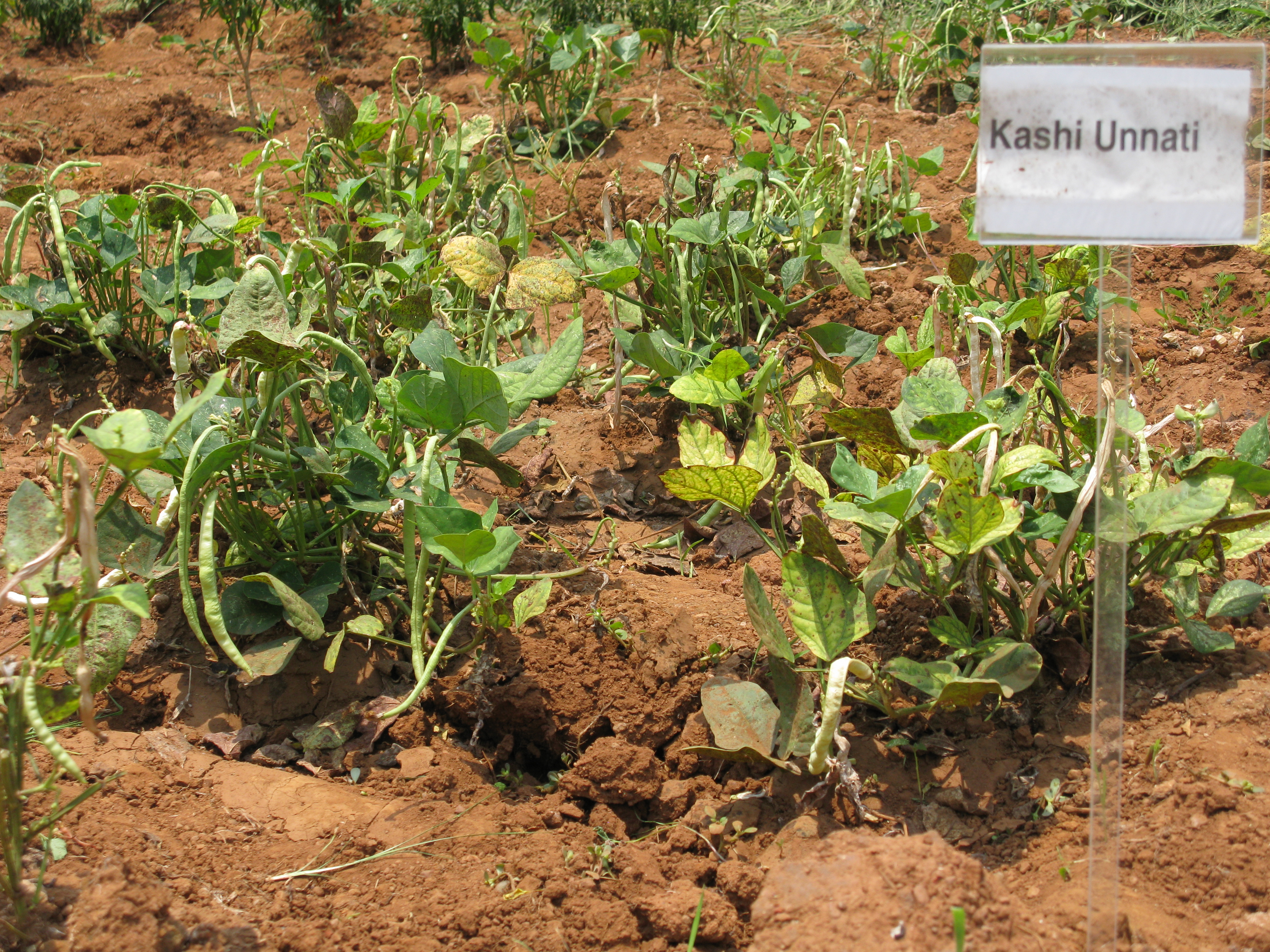
Kashi unnati:
This is a photo-insensitive variety. Plants of this variety are dwarf and bushy, height 40-50 cm, branches 4-5 per plant, early flowering (30-35 days after sowing), first harvesting at 40-45 days after sowing, produces 40-45 pods per plant. Pods are 30-35 cm long, light green, soft, fleshy and free from parchment. The cultivar is resistant to golden mosaic virus and Pseudocercospora cruenta, and gives green pod yield of about 125-150 q/ ha. This has been identified by Horticultural Seed Sub-Committee and Notified during XIII meeting of Central Sub-Committee on Crop Standard Notification and Release of Varieties for Horticultural Crops for the cultivation in Punjab, U.P., and Jharkhand.
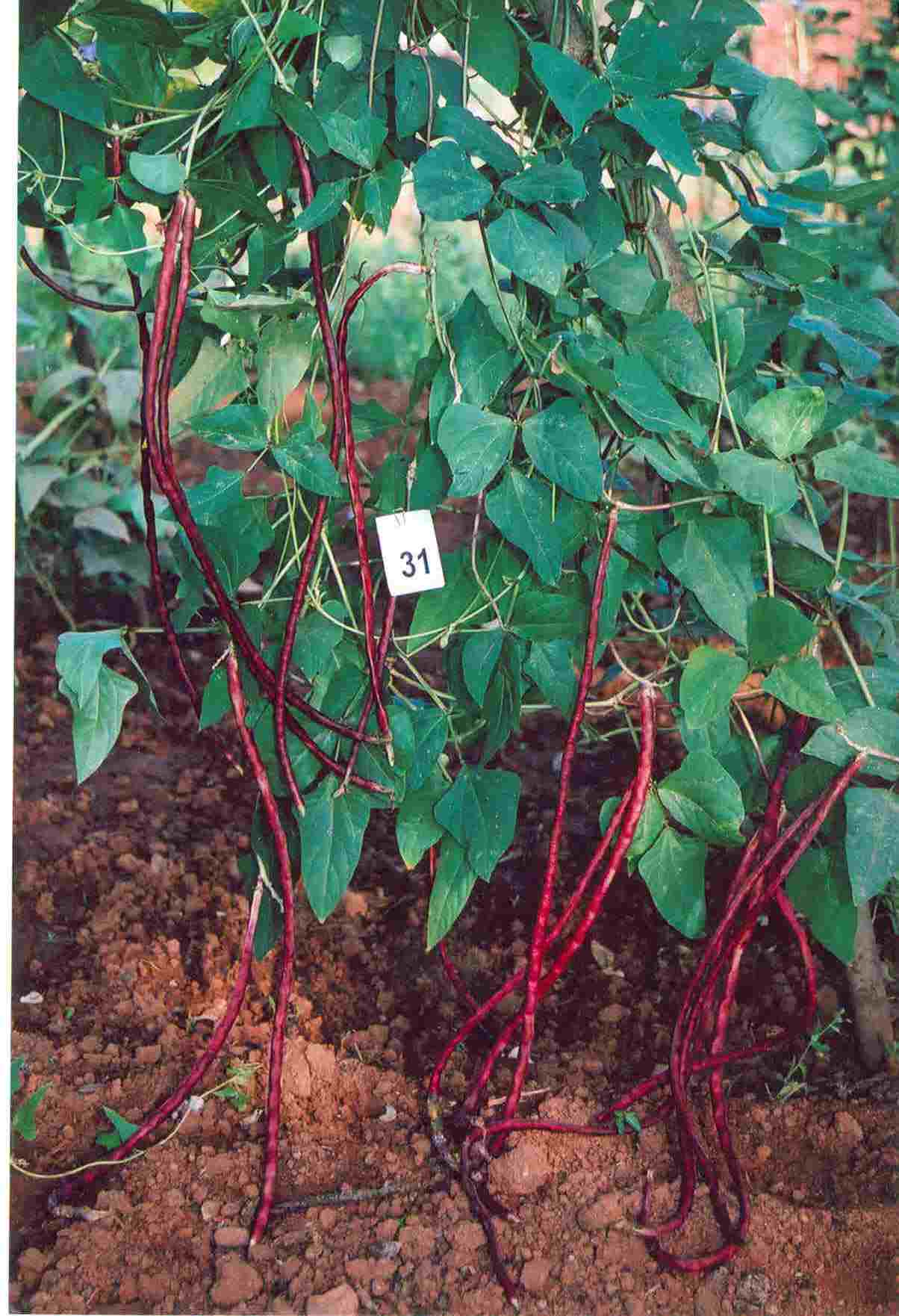
Vyjayanthi :
Trailing growth habit, long wine red coloured pods, brown seeds, Av. Length of pod
50.62 cm. Av.fruit weight 16.17 g. No. of seeds/pod 20-22.Productivity 12.6 t/ha
Yard long bean responds well to application of fertilizers. Hence, a higher dose of 25:75:60 kg NPK/ha is also recommended in some other states. Half of N along with entire dose of P and K should be applied at the time of final land preparation. Apply remaining 15-20 days after sowing along with weeding and earthing up.
For yard long bean, apply fertilizers in several spit doses sat fortnightly interval of protracted fruiting. Drenching cow dung slurry in basins of plants and spraying cow dung supernatant liquid is also highly beneficial for trailing types.
Apply 250 kg lime or 400 kg dolomite/ha in acidic soils at the time of land preparation.
Cowpea in general, is sensitive to water logging and required less moisture compared to other vegetables. Grain types require only 2-3 protective irrigations at flowering and pod development stages. Water requirement of vegetable types with protracted and long fruiting phase is more than that of grain types. Irrigate trailing vegetable types at 4-15 days interval depending on soil during pre-flowering phase. Hardening of plants by restricting irrigation during pre-flowering stage is advantageous for avoiding excess vegetative growth and will induce early flowering. Once plant starts flowering, provide frequent but light irrigation. Excess irrigation and frequent rains during fruiting period induces vegetative phase at the expense of fruiting.
Climbing types are usually trailed to bowers or trellis made of bamboo poles and coir or plastic wire for harvesting maximum yield. Erect supports with wooden sticks for trailing plants to the bower when plants start vining. To reduce cost of production, stretching of jute wires from base to bower is also a viable practice.
Shallow cultivation and earthing is necessary during early stages of crop to check weed growth. Fluchloralin (2 litres/ha) will effectively check weed growth for 20-25 days. Once crop is covered weeds will naturally be under control.
Light earthing up along with fertilizer application is also highly advantageous for better growth of plants. This facilitates better root growth and prevents lodging of your seedlings.
Nipping of excess vegetative growth is a common practice for inducing flowering and fruiting in bush and semi-trailing cowpea varieties especially when there is rain during flowering and fruiting phase.
Vegetable cowpea varieties especially those belonging to succulent yard long bean are susceptible to a number of pests and diseases. Pea aphids, serpentine leaf miner, stem fly, coreid bug, thrips, pod borers, leaf roller, hairy caterpillar etc. are major pests and Fusarium wilt, Rhizoctonia wilt, anthracnose, powdery mildew and mosaic are serious diseases affecting cowpea.
Tenter fruits are harvested after attaining full size but before they become fibrous. Yard long bean is usually harvested in alternate days and harvesting period extends up to 45 days under good management practices. In bush varieties 2-5 harvests are possible.
Yield
Bush varieties 4-5 t/ha
Semi- trailing varieties 7-8 t//ha
Yard long bean varieties 15-18 t/ha
Seed yield
Bush varieties 750-1250 kg/ha
Semi-trailing varieties 1000-1500 kg/ha
Yard long bean varieties 450 -600 kg/ha
Input availability |
Address/Contact details |
| Seeds |
|
Fertilizers |
|
Pesticides |
|
| Machineries |
|
|
